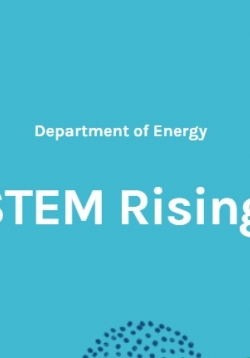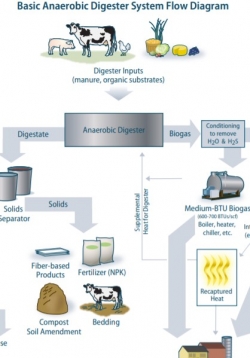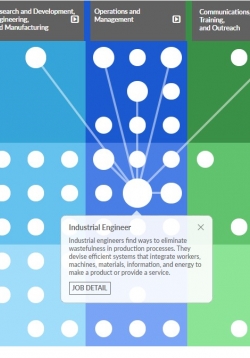
STEM Rising inspires, educates, and sparks lifelong success in STEM by sharing resources & events from the National Labs, National Nuclear Security Administration, and program offices. View our STEM resources for students, teachers, and workforce

STEM Rising inspires, educates, and sparks lifelong success in STEM by sharing resources & events from the National Labs, National Nuclear Security Administration, and program offices. View our STEM resources for students, teachers, and workforce

A report on the the basics of Anaerobic Digesters which are used to turn food and animal waste into biogas. A great infographic on the many ways to use biogas and some details on the types of biodigesters.

The American Jobs Project develops practical, customized strategies to promote economic development and advanced energy jobs. They have published state-level industry reports highlighting opportunities in Advanced Energy for 24 states for the next 10 years. These can be great ways to identify Career-Connected Learning opporunities and industry partners in your state.

A series of official career maps published by Department of Energy that highlight career tracks in a variety of clean energy fields across a range of expertise and educational levels. A great resource for thinking about career-connected learning, especially for HS and CTE educators. A separate career map highlights careers in hydrogen and fuel cells.
This lesson is a (stand alone or in-unit) guided non-fiction research and writing project, which includes a differentiated choice menu and list of ideas for publishing the completed project. Each student will choose one of ten energy sources to research,...
As students begin to look at the role photovoltaics might play within the transportation energy sector, it is important for them to understand why the phasing-out of fossil fuels is such a daunting task. This lesson is designed to help students comprehend...
The purpose of this lesson is for students to obtain base knowledge of how renewable and non-renewable energy is generated and identify differences between renewable resources and fossil fuels. Students will research the potential long-term and short-term...
During this introduction lesson series students will explore the guiding phenomenon to understand e-waste and connect it to battery design. Students will utilize online resources to learn about problems from e-waste around the world and the environmental...
Students completing this lesson will already have identified some of the problems inherent in the development of ideas to replace fossil fuels in the transportation sector. Students will now conduct some research to identify some of the pros and cons of...
Students will return to the phenomena of energy resources to support safety, health, and comfort in an emergency situation. They will distinguish between how common materials provide energy and develop an understanding of how the atomic and molecular...
Bonneville Environmental Foundation
1500 SW 1st Avenue, Suite 710
Portland OR 97201
phone: 503-248-1905